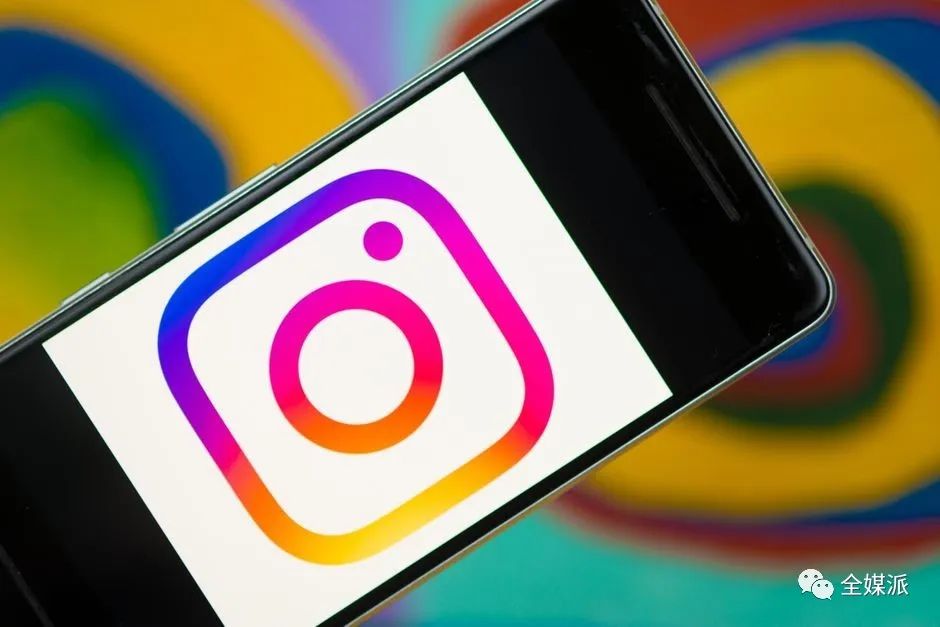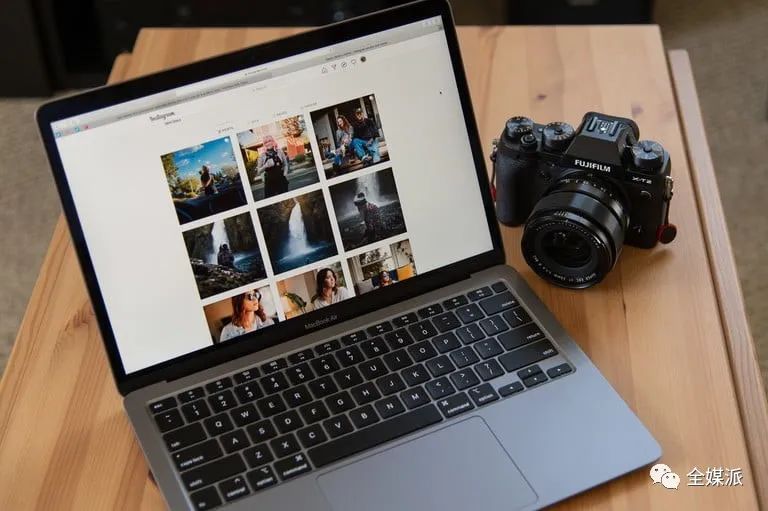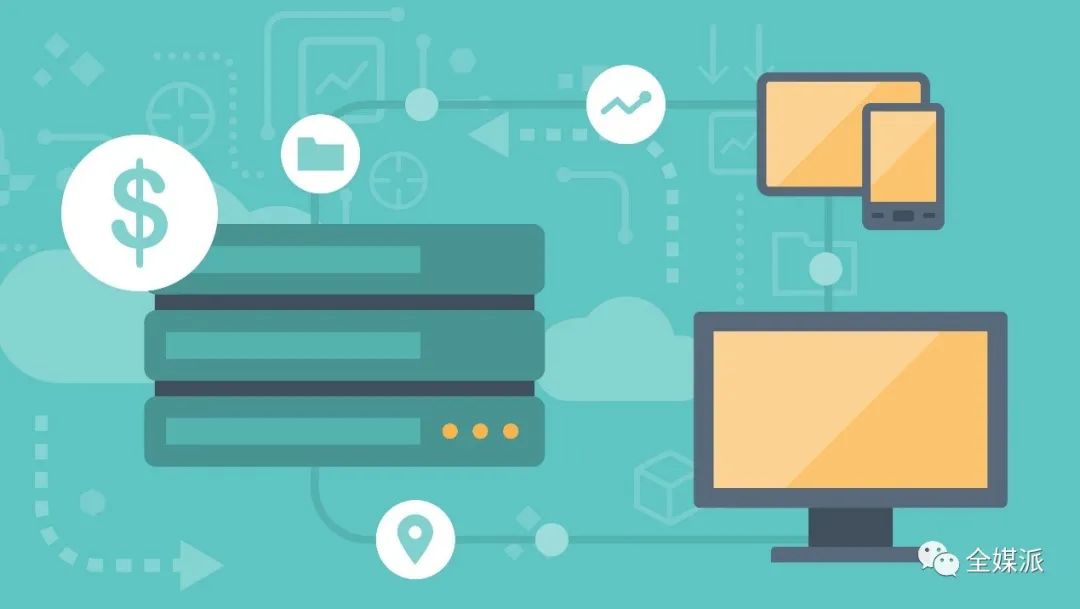A Facebook apocalypse.
Editor’s note: This article comes from the WeChat public account “All Media School” (ID: quanmeipai) , author: Tencent media.
Since its establishment in October 2011, Instagram has been a professional mobile app. It wasn’t until November 2012 that its users started to have a simplified desktop photo browsing experience. But since then, Instagram has paid more and more attention to the development of functions on the desktop side, and various new functions have gradually penetrated into the desktop applications. As of now, the only missing feature on the Instagram desktop is its core function: uploading photos.

In fact, the Instagram desktop now has sufficient conditions to allow users to directly upload and post photos. Why does Instagram still prefer to open this core function only on mobile devices? In this issue, all media groups (ID: quanmeipai) compiled DIGITAL TRENDS articles, combed Instagram’s gradual embrace of the desktop context and reasons, and discussed what can be learned from Facebook in order to achieve this move, and why Instagram still has reservations.
No longer limited to mobile Instagram
As mentioned at the beginning of the article, Instagram has already surpassed the pure mobile app.
According to technology media The Verge reported that from January 14 this year, Instagram began internal testing, allowing a small number of users worldwide to use Direct Messages (private messages, hereinafter referred to as DM) through the web version. The experience of delivering a private message through a browser is essentially the same as transferring on a mobile device: you can create a new group or start a new conversation through the private message page or profile page; you can also double-click to like a message, from Share photos on the desktop and see the total number of unread messages. As long as you enable notifications for the entire Instagram site in your browser, you can accept desktop private message notifications. Instagram stated that it will “continue to iterate” this feature during testing.
On April 10, Instagram officially announced, “Now, no matter where you are in the world, you can directly receive or send private messages through the desktop.” DM can be said to be a key step for Instagram to embrace the desktop client. The user experience applied to different devices is of great significance.

So, as an “indigenous” on the mobile side, why did Instagram start to move towards the desktop side?
In the early days, people just shared photos taken on their phones, so Instagram ’s humble desktop experience was understandable. But soon, a large number of filters on Instagram inspired by the movie set off a new trend of mobile photography. Self-portraits have become an art form. Every meal of people is worth showing off, and baristas can also become photography artists. INS wind has become a term that specifically refers to this style of pictures, which is popular all over the world.

Today, Instagram has become the second most downloaded app in the world, with more than 1 billion users. Its development has already surpassed the “Lo-fi” food photography with the aim of aesthetics and dedicated to the realization of a unique style. Professional photographers, artists and brands have also become members of its user community. For these professional and professional users, the mobile phone is usually an auxiliary device, and the photos they upload to Instagram often come from the computer, and the mobile APP only exists as a “middleman”.
This requires Instagram to bring a better overall experience. After all, mobile apps are no longer suitable for everyone.
Facebook Revelation: What can Instagram learn from this?
Facebook, the parent company of Instagram, was born before the popularity of smartphones, so Facebook was first developed specifically for the desktop. In view of this, it has a more complete tableFace experience, Instagram can integrate some of its functions to your desktop.
Cross-platform, cross-device information transfer
The synchronization of the DM function is a good start and is also in line with Facebook ’s goal of integrating its information services. In the past year, Facebook has increasingly focused on information exchange. In an interview with the New York Times, its CEO Zuckerberg stated that “private information, community, and stories” are “the three fastest growing areas of online communication.” Instagram’s story function is already online on the desktop. The realization of the DM function will further promote the realization of the information integration goal proposed by Zuckerberg last year, that is, eventually allowing users of Facebook, Instagram and WhatsApp to send messages to each other across platforms.

For some Instagram users, the realization of such cross-device information transfer can be called a “dream come true”. People who use Instagram for business management, especially photographers, artists, and some small businesses that do not have a dedicated social media operation team, they have already used Yelp, Facebook, and email services on the desktop, just to pick up the second one for Instagram The equipment is obviously not cost-effective.
More open image upload and image format
Currently, uploading pictures to Instagram posts and stories from the desktop is still restricted. There is no doubt that business users tend to create and plan posts in advance, but Instagram ’s current drafting feature does not fully support this, and brands still need to rely on third-party services to complete these tasks.

For image formats, Facebook ’s policy is also more relaxed. Instagram controls the horizontal pixels of the picture resolution to 1080 pixels. For a square photo, this means only one megapixel. Instagram will also greatly compress the photos, resulting in picturesThe quality of the tablets is further reduced. Because the mobile phone screen is small, it is understandable to do this on the mobile side, but the computer side is completely different.
Not only that, Instagram also limits the aspect ratio of pictures. For example, most cameras with interchangeable lenses have a default aspect ratio of 3: 2, while Instagram only supports horizontal photos at this ratio. If you try to send a 2: 3 vertical photo, it will be cropped to a 4: 5 ratio, and the top or bottom of the original photo will be cut off. On the mobile side, this may be to reserve space for other elements in the interface, but this is not necessary for the desktop side.

In all fairness, from the beginning, only uploading square photos has been developed to now, Instagram has made great progress, but there is still room for improvement. Getting ready for relatively large, less compressed images will help Instagram shine on the desktop and will also attract more photographers and artists to use the platform to promote their work.
Maybe only some Instagram users care about these demands, but these users are increasingly important to the platform itself, because they are not only engaged in the production of commercially valuable content, but also paying for the advertising business that maintains the operation of the platform. Therefore, Instagram may need to learn Facebook to become a real desktop-friendly application.
Keep the mobile experience unchanged
Since more and more functions have penetrated into the desktop, why does Instagram only open the core functions on the mobile side and keep its mobile experience unchanged?
This is largely due to cost concerns. Expansion of server space requires cost. About 100 million photos are shared on Instagram every day. If you allow uploading photos with higher resolutions and larger aspect ratios, the cost will increase.

In addition, there is also a problem of performance cost.As a mobile-first application, Instagram needs sufficient fluency , and the increase in loading time will affect the user experience. This means that the images need to be loaded as soon as possible, even when using cellular networks or in scenarios with limited bandwidth. Desktop-first applications are specifically designed for relatively large home and office bandwidth, so this factor can be ignored.
Even considering the above two factors, people are not allowed to upload larger photos, Instagram can still allow desktop photos to be uploaded and posted, which will not affect their mobile experience and will solve the pain points of many users. Simplify the photo publishing process that still needs hackers or third-party software to complete.

The original goal of Instagram was to build an instant photo sharing community. Now it wants to provide a more than 1 billion users with a responsive service (responsive experience). Any factor may become Instagram avoiding the desktop and keeping core functions on mobile Reason.
Everything is speculation, the real reason may be very simple. After all, when asked why they have n’t developed an iPad app yet, Instagram said it ’s just because there is not enough manpower, and the desktop may be no exception.
References:
1.https: //www.digitaltrends.com/photography/its-time-for-instagram-to-fully-embrace-the-desktop/
2.https: //www.theverge.com/2020/1/14/21063269/instagram-web-dm-test-launch-browser-access-messages-facebook
3.https: //www.businessinsider.com/instagram-direct-messages-desktop-web-browser-rollout-how-to-use-2020-4


Facebook, the parent company of Instagram, was born before the popularity of smartphones, so Facebook was first developed specifically for the desktop. In view of this, it has a more complete tableFace experience, Instagram can integrate some of its functions to your desktop.
Cross-platform, cross-device information transfer
The synchronization of the DM function is a good start and is also in line with Facebook ’s goal of integrating its information services. In the past year, Facebook has increasingly focused on information exchange. In an interview with the New York Times, its CEO Zuckerberg stated that “private information, community, and stories” are “the three fastest growing areas of online communication.” Instagram’s story function is already online on the desktop. The realization of the DM function will further promote the realization of the information integration goal proposed by Zuckerberg last year, that is, eventually allowing users of Facebook, Instagram and WhatsApp to send messages to each other across platforms.

For some Instagram users, the realization of such cross-device information transfer can be called a “dream come true”. People who use Instagram for business management, especially photographers, artists, and some small businesses that do not have a dedicated social media operation team, they have already used Yelp, Facebook, and email services on the desktop, just to pick up the second one for Instagram The equipment is obviously not cost-effective.
More open image upload and image format
Currently, uploading pictures to Instagram posts and stories from the desktop is still restricted. There is no doubt that business users tend to create and plan posts in advance, but Instagram ’s current drafting feature does not fully support this, and brands still need to rely on third-party services to complete these tasks.

For image formats, Facebook ’s policy is also more relaxed. Instagram controls the horizontal pixels of the picture resolution to 1080 pixels. For a square photo, this means only one megapixel. Instagram will also greatly compress the photos, resulting in picturesThe quality of the tablets is further reduced. Because the mobile phone screen is small, it is understandable to do this on the mobile side, but the computer side is completely different.
Not only that, Instagram also limits the aspect ratio of pictures. For example, most cameras with interchangeable lenses have a default aspect ratio of 3: 2, while Instagram only supports horizontal photos at this ratio. If you try to send a 2: 3 vertical photo, it will be cropped to a 4: 5 ratio, and the top or bottom of the original photo will be cut off. On the mobile side, this may be to reserve space for other elements in the interface, but this is not necessary for the desktop side.

In all fairness, from the beginning, only uploading square photos has been developed to now, Instagram has made great progress, but there is still room for improvement. Getting ready for relatively large, less compressed images will help Instagram shine on the desktop and will also attract more photographers and artists to use the platform to promote their work.
Maybe only some Instagram users care about these demands, but these users are increasingly important to the platform itself, because they are not only engaged in the production of commercially valuable content, but also paying for the advertising business that maintains the operation of the platform. Therefore, Instagram may need to learn Facebook to become a real desktop-friendly application.
Keep the mobile experience unchanged
Since more and more functions have penetrated into the desktop, why does Instagram only open the core functions on the mobile side and keep its mobile experience unchanged?
This is largely due to cost concerns. Expansion of server space requires cost. About 100 million photos are shared on Instagram every day. If you allow uploading photos with higher resolutions and larger aspect ratios, the cost will increase.

In addition, there is also a problem of performance cost.As a mobile-first application, Instagram needs sufficient fluency , and the increase in loading time will affect the user experience. This means that the images need to be loaded as soon as possible, even when using cellular networks or in scenarios with limited bandwidth. Desktop-first applications are specifically designed for relatively large home and office bandwidth, so this factor can be ignored.
Even considering the above two factors, people are not allowed to upload larger photos, Instagram can still allow desktop photos to be uploaded and posted, which will not affect their mobile experience and will solve the pain points of many users. Simplify the photo publishing process that still needs hackers or third-party software to complete.

The original goal of Instagram was to build an instant photo sharing community. Now it wants to provide a more than 1 billion users with a responsive service (responsive experience). Any factor may become Instagram avoiding the desktop and keeping core functions on mobile Reason.
Everything is speculation, the real reason may be very simple. After all, when asked why they have n’t developed an iPad app yet, Instagram said it ’s just because there is not enough manpower, and the desktop may be no exception.
References:
1.https: //www.digitaltrends.com/photography/its-time-for-instagram-to-fully-embrace-the-desktop/
2.https: //www.theverge.com/2020/1/14/21063269/instagram-web-dm-test-launch-browser-access-messages-facebook
3.https: //www.businessinsider.com/instagram-direct-messages-desktop-web-browser-rollout-how-to-use-2020-4

Currently, uploading pictures to Instagram posts and stories from the desktop is still restricted. There is no doubt that business users tend to create and plan posts in advance, but Instagram ’s current drafting feature does not fully support this, and brands still need to rely on third-party services to complete these tasks.

For image formats, Facebook ’s policy is also more relaxed. Instagram controls the horizontal pixels of the picture resolution to 1080 pixels. For a square photo, this means only one megapixel. Instagram will also greatly compress the photos, resulting in picturesThe quality of the tablets is further reduced. Because the mobile phone screen is small, it is understandable to do this on the mobile side, but the computer side is completely different.
Not only that, Instagram also limits the aspect ratio of pictures. For example, most cameras with interchangeable lenses have a default aspect ratio of 3: 2, while Instagram only supports horizontal photos at this ratio. If you try to send a 2: 3 vertical photo, it will be cropped to a 4: 5 ratio, and the top or bottom of the original photo will be cut off. On the mobile side, this may be to reserve space for other elements in the interface, but this is not necessary for the desktop side.

In all fairness, from the beginning, only uploading square photos has been developed to now, Instagram has made great progress, but there is still room for improvement. Getting ready for relatively large, less compressed images will help Instagram shine on the desktop and will also attract more photographers and artists to use the platform to promote their work.
Maybe only some Instagram users care about these demands, but these users are increasingly important to the platform itself, because they are not only engaged in the production of commercially valuable content, but also paying for the advertising business that maintains the operation of the platform. Therefore, Instagram may need to learn Facebook to become a real desktop-friendly application.
Keep the mobile experience unchanged
Since more and more functions have penetrated into the desktop, why does Instagram only open the core functions on the mobile side and keep its mobile experience unchanged?
This is largely due to cost concerns. Expansion of server space requires cost. About 100 million photos are shared on Instagram every day. If you allow uploading photos with higher resolutions and larger aspect ratios, the cost will increase.

In addition, there is also a problem of performance cost.As a mobile-first application, Instagram needs sufficient fluency , and the increase in loading time will affect the user experience. This means that the images need to be loaded as soon as possible, even when using cellular networks or in scenarios with limited bandwidth. Desktop-first applications are specifically designed for relatively large home and office bandwidth, so this factor can be ignored.
Even considering the above two factors, people are not allowed to upload larger photos, Instagram can still allow desktop photos to be uploaded and posted, which will not affect their mobile experience and will solve the pain points of many users. Simplify the photo publishing process that still needs hackers or third-party software to complete.

The original goal of Instagram was to build an instant photo sharing community. Now it wants to provide a more than 1 billion users with a responsive service (responsive experience). Any factor may become Instagram avoiding the desktop and keeping core functions on mobile Reason.
Everything is speculation, the real reason may be very simple. After all, when asked why they have n’t developed an iPad app yet, Instagram said it ’s just because there is not enough manpower, and the desktop may be no exception.
References:
1.https: //www.digitaltrends.com/photography/its-time-for-instagram-to-fully-embrace-the-desktop/
2.https: //www.theverge.com/2020/1/14/21063269/instagram-web-dm-test-launch-browser-access-messages-facebook
3.https: //www.businessinsider.com/instagram-direct-messages-desktop-web-browser-rollout-how-to-use-2020-4

